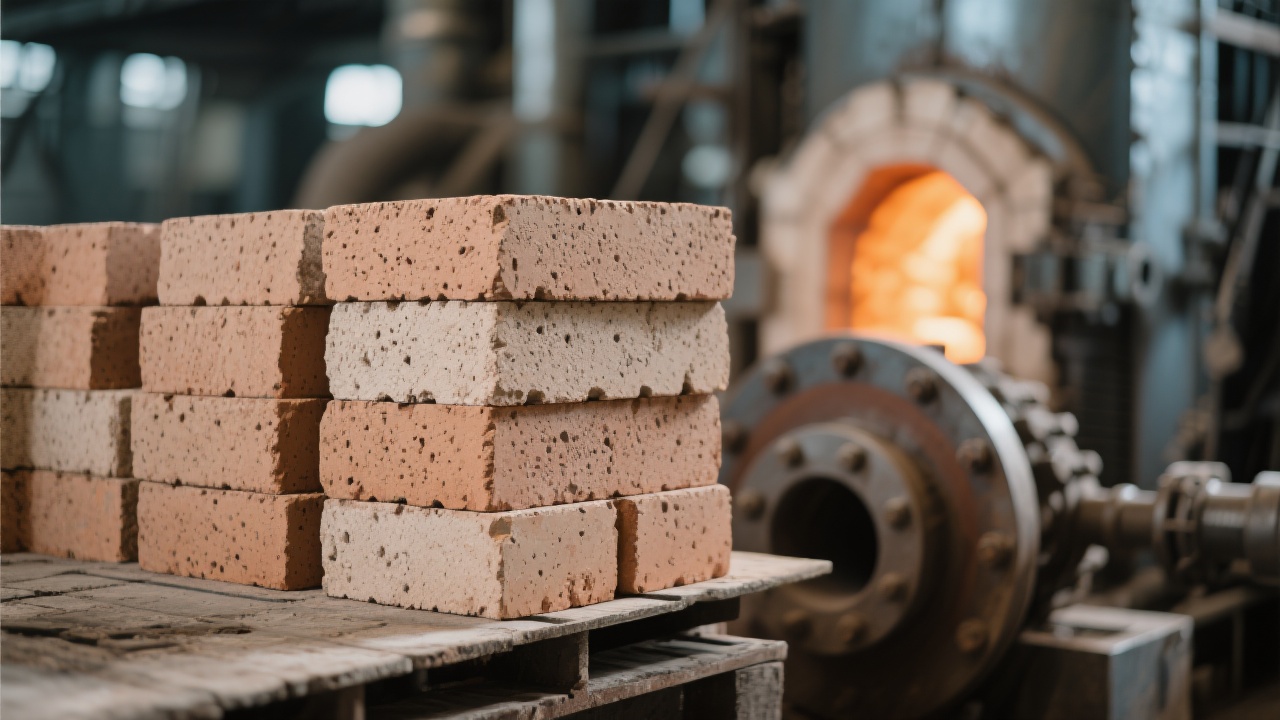
In the glass manufacturing industry, the failure of refractory materials in glass melting furnaces is a persistent headache for manufacturers. Traditional refractory materials such as mullite, high - alumina bricks, and zircon sand bricks often face challenges in high - temperature chemical erosion and thermal shock environments. For instance, under the long - term action of high - temperature molten glass, these materials may experience corrosion, spalling, and structural damage. This not only shortens the service life of the melting furnace but also leads to frequent shutdowns for maintenance, which seriously affects production efficiency and increases maintenance costs. In some factories, the service life of traditional refractory materials in the feeding channel may be as short as 1 - 2 years, and the annual maintenance cost can reach tens of thousands of dollars.

AZS33# blocks are made of high - purity Al₂O₃–ZrO₂–SiO₂ raw materials. The electro - fusion process involves melting these raw materials at extremely high temperatures in an electric furnace and then pouring them into a mold for cooling and solidification. This process is similar to forging a strong shield. Just like forging a high - quality sword requires the right materials and a precise forging process, the electro - fusion process of AZS33# blocks endows them with excellent performance. The high - temperature melting ensures the full mixing of various components, forming a stable chemical structure.
The electro - fusion process gives AZS33# blocks a dense micro - structure. Under a microscope, this structure can be seen as a tightly woven net that effectively resists the penetration of high - temperature molten glass and chemical substances. In terms of corrosion resistance, the dense structure reduces the contact area between the material and the corrosive medium, greatly enhancing its anti - corrosion ability. In terms of thermal shock stability, the homogeneous structure can better withstand temperature changes without cracking or spalling. For example, in a glass factory's melting furnace, AZS33# blocks showed excellent performance in resisting sudden temperature changes during the startup and shutdown processes, while traditional materials often cracked under the same conditions.
In the feeding channel of the glass melting furnace, AZS33# blocks can effectively resist the erosion of high - temperature glass flow, extending the service life of the feeding channel from 1 - 2 years of traditional materials to 5 - 8 years. At the bottom of the trough, the excellent wear - resistance and corrosion - resistance of AZS33# blocks prevent the trough from being damaged by the scouring of molten glass, reducing the frequency of trough replacement. On the top of the hopper, AZS33# blocks can withstand high - temperature thermal radiation and chemical corrosion, ensuring the normal operation of the hopper. For example, a glass manufacturing enterprise replaced the refractory materials in the feeding channel with AZS33# blocks. After several years of operation, the maintenance frequency of the feeding channel decreased significantly, and the production efficiency increased by about 20%.

| Material | Service Life in Feeding Channel (Years) | Annual Maintenance Cost ($) | Corrosion Resistance | Thermal Shock Stability |
|---|---|---|---|---|
| AZS33# Blocks | 5 - 8 | 5,000 - 8,000 | Excellent | Good |
| Mullite | 1 - 2 | 15,000 - 20,000 | Fair | Poor |
| High - alumina Bricks | 1 - 3 | 12,000 - 18,000 | Fair | Fair |
| Zircon Sand Bricks | 2 - 3 | 10,000 - 15,000 | Good | Fair |
From the table, it is clear that AZS33# blocks have significant advantages in terms of service life and maintenance cost compared with other materials. They can effectively save costs for glass manufacturers and improve the long - term stable operation of melting furnaces.
According to ISO and GB/T standards, AZS33# blocks meet strict quality requirements. Laboratory tests also show that in a high - temperature environment of 1500 - 1600°C, the corrosion rate of AZS33# blocks is only 1/3 - 1/2 of that of traditional materials. These data further prove the excellent performance of AZS33# blocks.

In conclusion, AZS33# blocks are the optimal choice for refractory materials in the feeding channels of glass melting furnaces. They can effectively improve the operating efficiency of melting furnaces, save maintenance costs, and avoid frequent shutdowns. Are you still troubled by the failure of refractory materials in your glass melting furnace? Click here to learn more about how AZS33# blocks can solve your problems.

